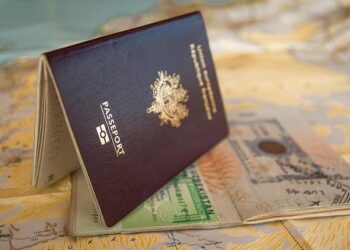The tragic helicopter crash that claimed the life of Iran’s President Ebrahim Raisi starkly underscores Iran’s aviation challenges exacerbated by decades of US sanctions. With an average fleet age exceeding 25 years, Iranian airlines operate some of the world’s oldest aircraft, including models long retired elsewhere. Raisi’s Bell 212 helicopter, a relic from 1968, symbolizes Iran’s reliance on outdated aircraft amidst severe procurement restrictions. The crash, amidst dense fog, highlights the perilous conditions faced by Iranian aviation and underscores urgent needs for modernization that geopolitical tensions have hindered for decades.
Sign up for your early morning brew of the BizNews Insider to keep you up to speed with the content that matters. The newsletter will land in your inbox at 5:30am weekdays. Register here.
By Golnar Motevalli and Ben Sills
The helicopter crash that killed Iran President Ebrahim Raisi is the latest reminder of the poor state of many aircraft operating in the Islamic Republic after almost half a century of US sanctions.
Iran has been largely barred from purchasing new aircraft or aircraft components from US or European suppliers since the revolution of 1979, leaving both military and civilian operators cut off from heavyweights Boeing Co. and Airbus SE and reliant on patched-up vehicles from earlier eras.
Iranian airlines operate some of the world’s oldest aircraft, with an average fleet age of over 25 years. Some domestic services are operated by models that have long been retired in the rest of the world, including the McDonnell Douglas MD-83 and Airbus A300 and A310.
McDonnell Douglas was acquired by Boeing some 27 years ago.
Read more: Mashaba says ‘viral marketing’, strong values sowing seeds for ActionSA’s election surprise
The BBC identified Raisi’s helicopter as a Bell 212, a US model that first entered service in 1968 and stopped being made in 1998.
Another Iranian Bell 212 crashed in the Persian Gulf in 2018 during an emergency airlift for an offshore oil worker, according to the Iranian oil ministry’s website.
Germany had been preparing to help upgrade Iran’s helicopter fleet after the 2015 nuclear accord with the US, an agreement that briefly eased sanctions. But those new supplies never materialized as the agreement fell apart under the Donald Trump administration.
Old, Basic
As a result, Iran flies some of the oldest and most basic helicopters still in use and relies on the skills of its engineers to find ways to keep them in operation with limited access to new materials.
While Iran most likely does source some supplies from Russia and China, it has extremely limited access to the most modern technology produced in the US and Europe.
Raisi was returning from an event on the border with Azerbaijan in a party of three helicopters when his craft went down with nine people on board, all of whom died. There was dense fog in the region, making conditions difficult for rescue teams. The other two helicopters landed safely.
Read also:
Why Ebrahim Raisi was a failure as Iran’s president: Marc Champion
Zuma’s MKP surges in newest poll, poised to be SA’s third-largest party
Putin vows to strengthen Russia-Iran ties after President Raisi’s death
© 2024 Bloomberg L.P.
Visited 1 times, 1 visit(s) today
>>> Read full article>>>
Copyright for syndicated content belongs to the linked Source : BizNews – https://www.biznews.com/global-citizen/2024/05/21/iran-helicopter-ageing-fleet





























